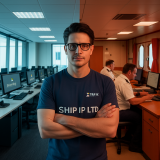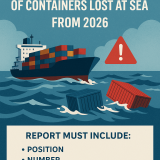The Australian Maritime Safety Authority (AMSA) recently issued a marine notice to draw the attention of vessel operators to the importance of planned maintenance in ensuring safe operation of ships and to highlight AMSA’s current focus on planned maintenance during Port State Control inspections.
Recent incidents have demonstrated the potentially serious consequences of a lack of effective maintenance of main engines and power generation systems that can pose serious risks to the safe and pollution-free operation of vessels. In response to this, AMSA will immediately increase focus on planned maintenance during routine Port State Control inspections.
The International Safety Management Code (ISM Code)
Maintenance of the ship and equipment is a requirement of the ISM Code, including that:
- maintenance inspections are held at appropriate intervals
- any non-conformity is reported, with its possible cause, if known
- appropriate corrective action is taken, and
- records of these activities are maintained.
The ISM Code is implemented in Australia through Marine Order 58 (Safe Management of Vessels).
In relation to maintenance, the ISM Code specifies that the vessel’s Safety Management System (SMS) should:
- Identify equipment and technical systems that would cause hazardous situations if they were to suddenly fail.
- Provide for specific measures (ie. regular testing of all equipment including stand-by equipment or systems that are not in continuous use) to ensure the continued reliability of such equipment or systems.
Maintenance activities need to be properly resourced, and procedures must be documented.
Impact of the COVID-19 pandemic
AMSA recognises that a number of factors presented challenges to effective maintenance during the COVID-19 pandemic restrictions. These include supply chain difficulties in getting necessary parts and specialist expertise to affected vessels.
However, with travel restrictions and quarantine requirements now largely removed in Australia, AMSA expects operators to resume supply of necessary spares and provide support and expertise such as class surveyors, specialist technicians, company representatives, etc.
AMSA recognises that there are still supply chain issues that can delay the provision of spare parts. However, these issues are now well known and AMSA expects that operators anticipate these challenges and make advance provision in planning maintenance to minimise impact.
In exceptional circumstances where spare parts cannot be provided, AMSA expects that the vessel operators will have consulted with the equipment manufacturers, classification society and flag state in preparing appropriate measures to ensure the continued safe operation of equipment and vessel. This could include for example the reduction in maximum continuous rating of an engine, or the provision of towage services in coastal waters.
Given the nature of recent incidents and the potentially serious consequences when effective maintenance has not been completed, AMSA will immediately increase focus on planned maintenance during routine Port State Control inspections to protect the safety of the crew, the vessel and the environment.
Inspections
During Port State Control inspections, AMSA will place a greater focus on planned maintenance of propulsion and auxiliary equipment and associated systems and will take necessary compliance actions to address any identified areas of concern.
This may include the physical attendance of classification society surveyors to verify the condition of critical equipment and its suitability to continue to function under all voyage conditions to maintain safe operations.
Operators should note that this is not a Focused Inspection Campaign (FIC) or Concentrated Inspection Campaign (CIC) of limited duration. It is a sustained focus on an identified area of concern that is part of AMSA’s data driven and risk-based approach to our PSC inspection regime.
Source: https://www.bairdmaritime.com/ausmarine/ausmarine-shipping-and-offshore/amsa-issues-marine-notice-on-planned-maintenance-on-ships/








